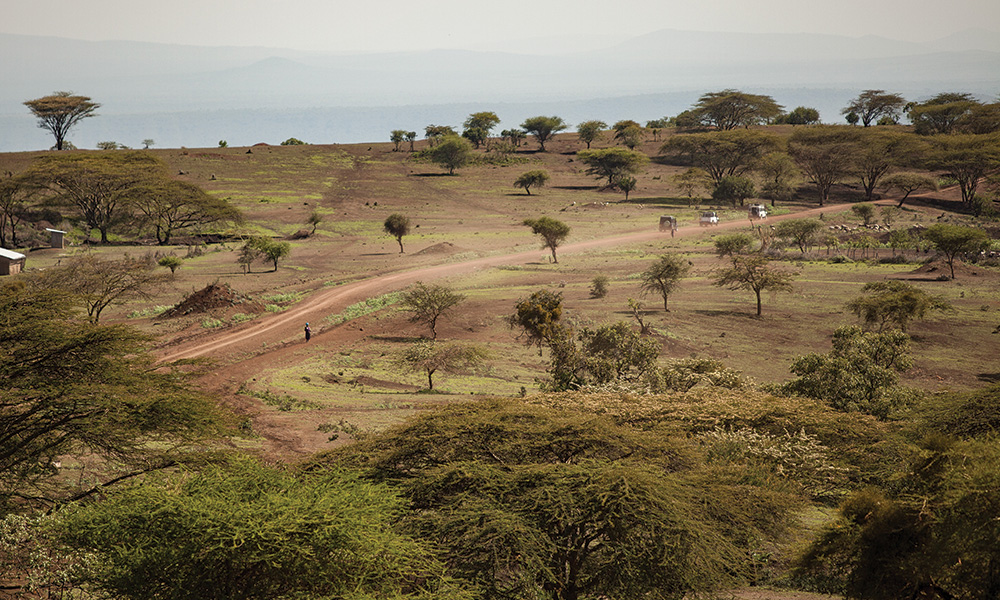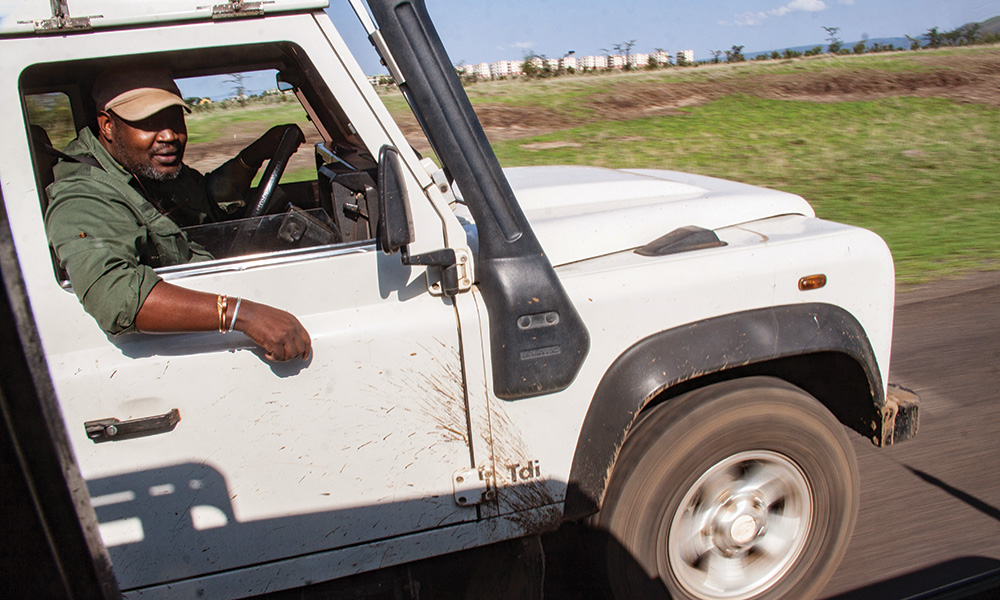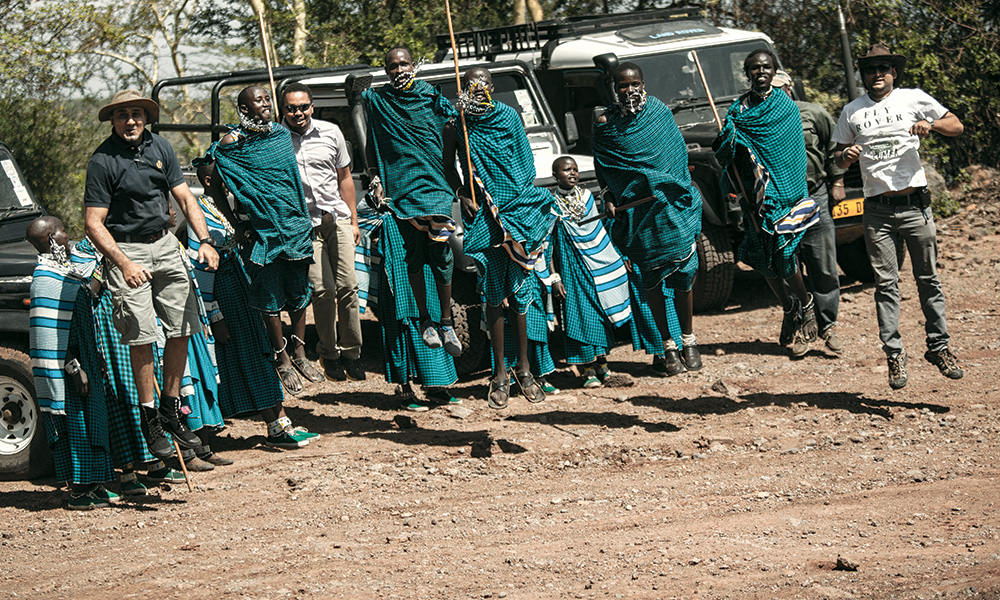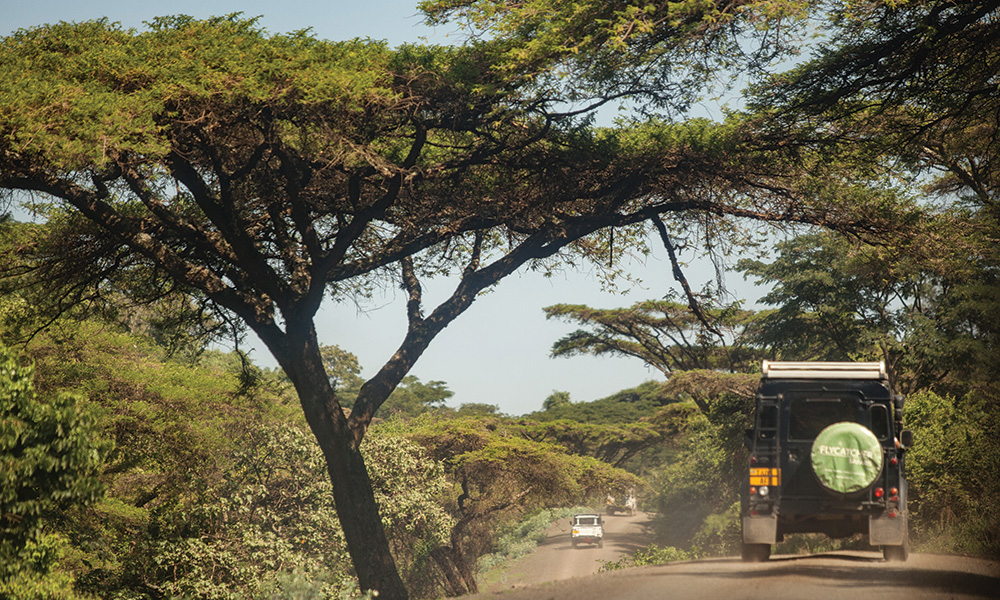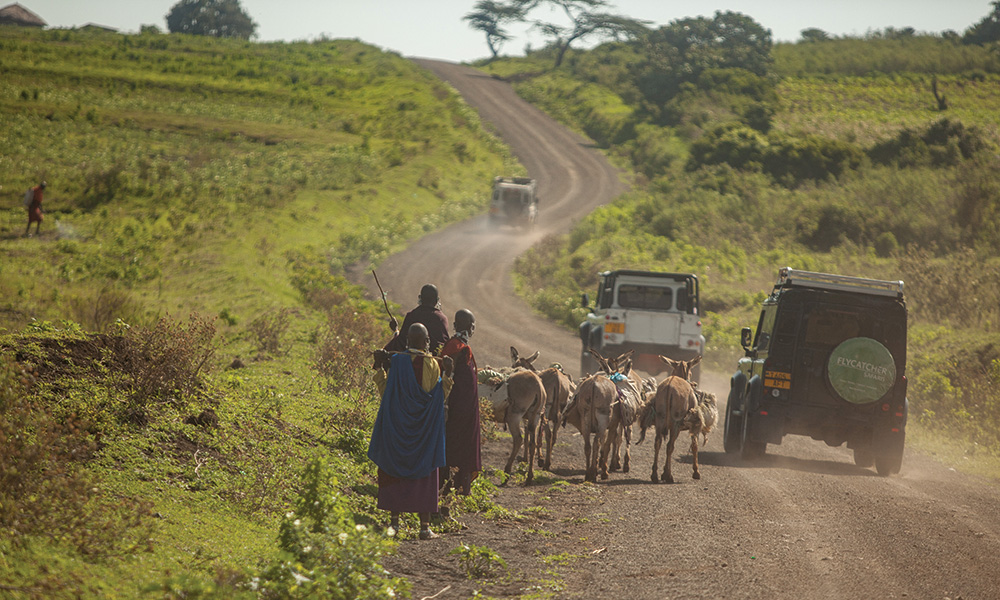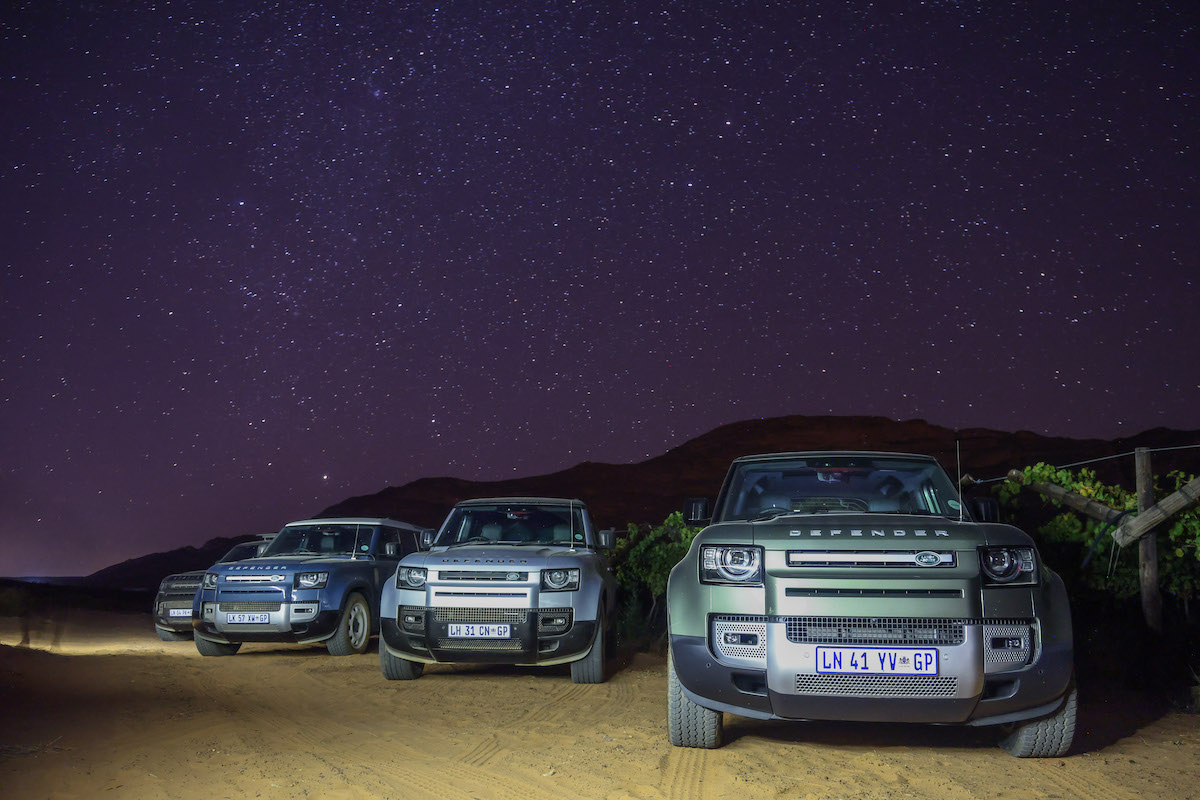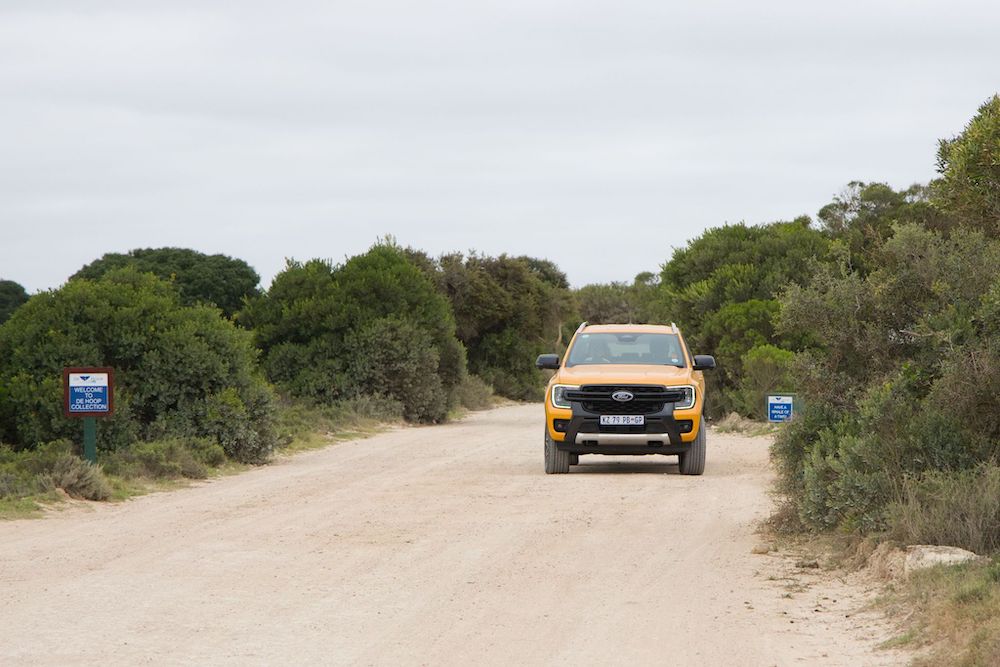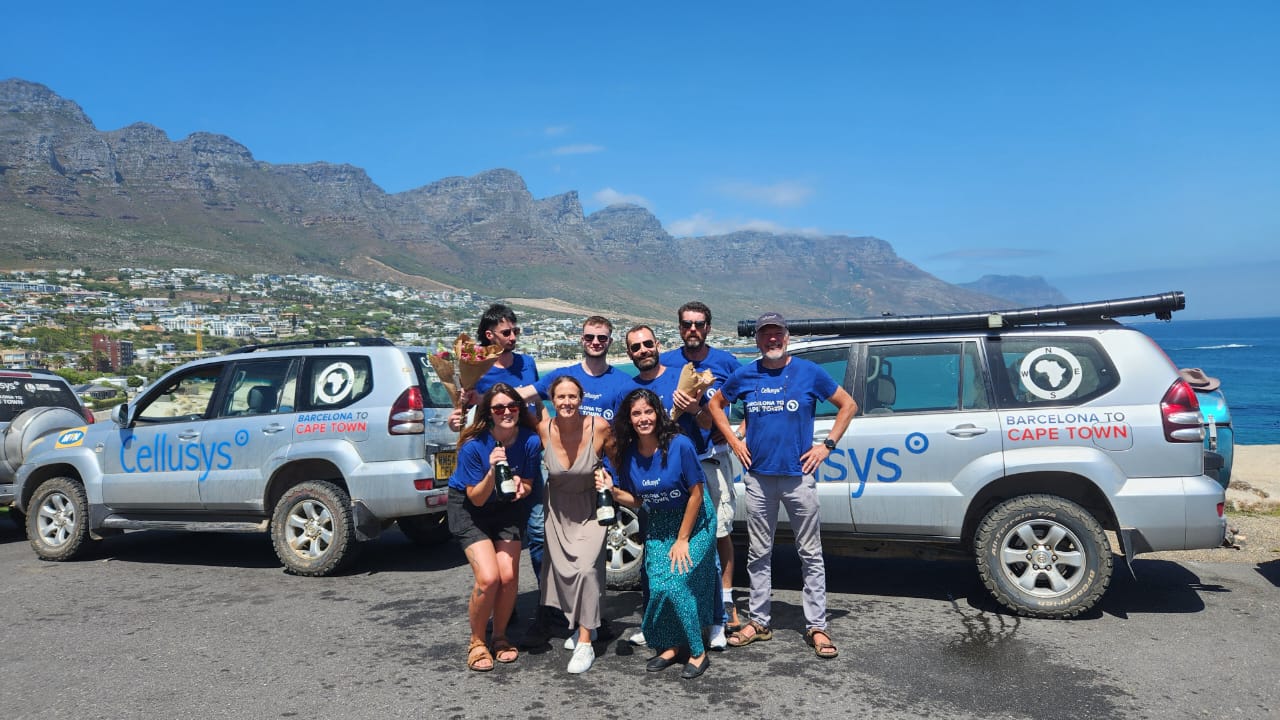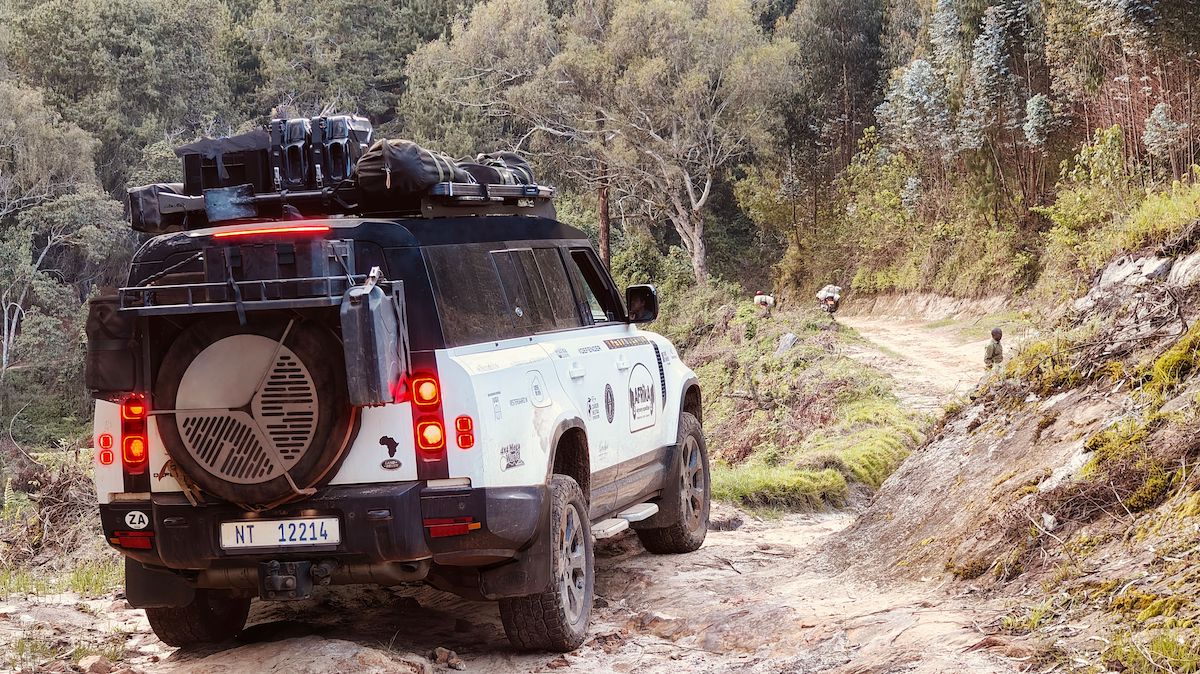Are Land Rover club weekends the same the world over? Journalist Robb Pritchard recently travelled to Tanzania and had the opportunity to spend the day with the newly formed Arusha Land Rover Club… and it turned out to be a far from ordinary off-road drive.
The Arusha Land Rover club was founded in November last year. Landy enthusiast Yussuf Khatry founded the club for local Land Rover enthusiasts and tour guides to get together and explore some remote parts of the stunning countryside around Arusha and the foothills of nearby Mount Kilimanjaro. Currently there are 26 members with 90s and 110s. Yussuf’s 1998 110 pick-up was in the workshop being put back together again after barrel rolling down a hill… on the last trip out. I hoped that this time, the only dramatic thing was going to be the landscape. He picked me up in a friend’s 110 with a fake UN aerial on the front bumper and a bank of speakers behind to play a music CD filled with obscure 1980’s pop music.
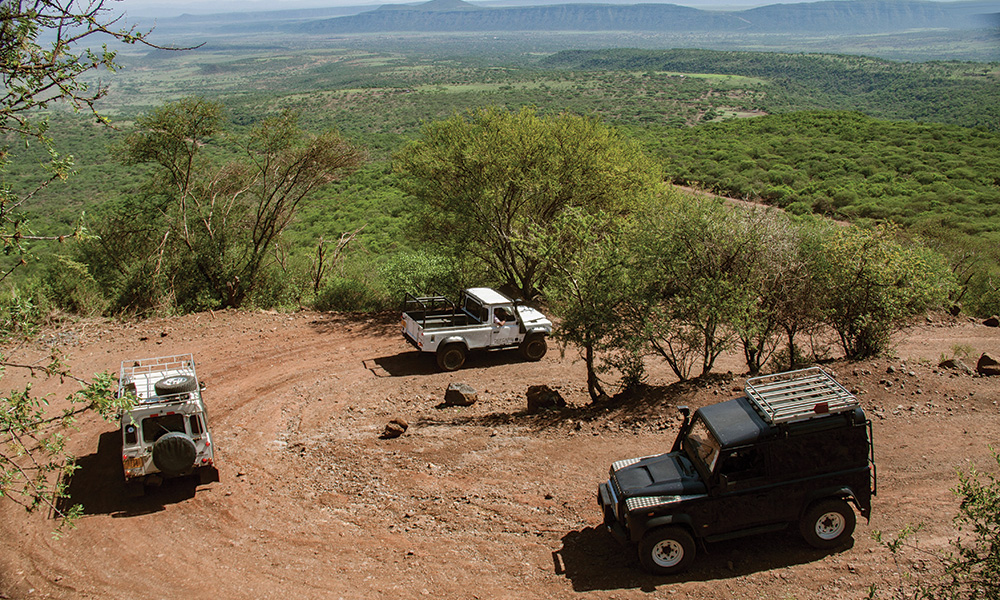
‘Africa time’ also applies to Tanzania, I discovered. The 7:30am call time soon rolled on to 8am. Finally, at 8:30, fellow club member Yasir pulled up in his 90 from 1998 with some interesting and well-made homemade improvements such as the air scoop in the bonnet for extra cooling, as well as handcrafted aluminium headlight surrounds. They were done so well you’d have to be really sharp to spot that they’re not original parts. Importing parts to Eastern Africa is prohibitively expensive so most cars are pretty much standard and any modifications done are likely to be locally made. Another member, Ian, was in a tray-back, also from 1998, with a full complement of underbody guards. Finally, Abdallah arrived in his 2001 110 station wagon. None of these were leisure vehicles, they were all hard-working workhorses that spend practically every day off-road.
Yasir runs Flycatcher Safaris and uses his mount to drive through the Serengeti checking the maintenance of his luxury camps. Ian has his own luxury lodge only accessible by 4×4 and Adballah runs all sorts of bespoke safaris from two-week multinational park game drives, to taking BBC film crews deep into the wilderness in search of rare and elusive species to make documentaries about. Yussuf runs Alpha Burgers which doesn’t require a Land Rover but he’s often a scout for the East African Safari rally, looking for routes for 180km-long stages, so his 110 gets a decent amount of use, too. When it’s on its wheels, that is. Driving in convoy, random stops for groceries and extra picnic items was all rather familiar. But this is Tanzania, the heart of Africa, and the first thing we saw as the tarmac ended was a hefty lump of elephant dung in the middle of the road. We weren’t in a national park or a reserve so it was a wild elephant that had left its mark.
According to Yussu, the dung was fresh, the elephant had passed by here just a few hours before. Through the acacia trees, evolved into high, flat canopies to keep their leaves away from giraffes, the road wound up through the hills passing small farming communities, which doesn’t sound too much different to being out green-laning in Wales, except the farmers here were Maasai. Tall, elegant shaven-headed people in their chequered, red shawls called a shuka tended small cornfields and herded goats and donkeys at the side of the road grazing on the verges. Apparently they wear red because it’s a colour that lion and other wild animals are scared of. Just about every one of them waved. In Britain, no one out walking has ever waved at me while I was out off-roading. Unless it was meant as a threat.
Something else that was slightly different… Yussuf told me that the sweeping, undulating track we were on was recently a stage of the East African Classic rally that saw some gorgeous classic cars attacking it at breakneck speed. And from the ’60s to the early 2000s, it was also used as part of the original Safari rally. Taking shots of the three cars ahead knowing such foreign yet familiar rallying history had taken part here was a great feeling. The rolling hills eventually opened up to reveal a wide, flat and vivid green valley far below. Not just any valley though. The plan for the day was to explore some dirt tracks in the famous Rift Valley, a land formation that came into existence millions of years ago when tectonic plates ripped themselves apart. It’s also regarded as the cradle of humanity, the place homo sapiens first stood upright.

To get down there was a series of tight, rock-strewn hairpins that Yussuf said had seen a lot of rallying action over the years, but today it was just a dozen young Maasai walking down the hill that caught our attention. All dressed in the same sky blue robes and adorned with the same necklaces of glistening beads, they were obviously dressed for some celebration or ritual. The rather suspicious guy in a suit, and scar patterns cut into his face, who was leading them didn’t want to talk to me though, but Yussuf had the personal skills to utterly transform his personality. Actually, he handed a little cash out of the window. That helped. Full of smiles he told us that they were all heading down from their village to sing in a village choir. Yes, they’d be more than happy to take their photos with us… if his palm was greased with a few thousand more shillings. Not for business, of course. Just a donation. We got the Land Rovers lined up and the Maasai came to line up in front. But instead of just standing and smiling they all started jumping up and down, which is a traditional mating dance. It was a totally surreal and special experience!
Down on the floor of the valley we pulled up under the shade of a huge acacia tree. Picnics are usual on Land Rover weekends, but not often with zebra footprints in the dirt. Yusuf pointed up the bare twigs hanging down under the canopy above us. The only thing that could reach up so far was a giraffe. Yasir’s ’90’s bonnet was transformed into a picnic table and a veritable feast was laid out. No cheese and pickle sandwiches with twiglets here, though. Early in the morning, Yussuf had stopped at a restaurant to pick up a proper Tanzanian meal of barbecued beef, potatoes and a kind of lentil stew. And there was a flask of amazing coffee that got emptied far too quickly. Yussuf knew where the big road went but wanted to find a route across country. Alas, no one had a functioning GPS or even a map. The bush either side of the road was strewn with rocks and covered in prickly bushes and had never seen a 4×4 so after a few kilometres I suggested that instead we go visit one of the mud and straw Maasai villages dotted here and there on the high ground.
We pulled up 100 metres away for Yussuf to explain to the others what the plan was but while he was doing it, the whole village came out to stare at us. The tall regal-looking chief greeted us and gave me a complicated hip-hop style handshake before inviting us to have a wander around the enclosure that was surrounded by a palisade of spiky bushes to protect against wild animals. It felt like taking a step back a few thousand years. Goats and chickens milled around the wonky-walled huts and I could see absolutely nothing of the modern world at all. The difference between their lives and ours was even more pronounced inside the mud huts. There are only a couple of fist-sized breather holes in the wall so the interior is pitch black. An open fireplace is in the middle of the floor but there’s no chimney, the smoke just filters up through the grass roof. After a few photos and some bottles of water and biscuits handed over for their time, we headed back down to the main track on the valley floor. Maasai obviously have an intimate knowledge of their local environment where their ancestors have lived for thousands of years but they are pretty useless at giving directions to people driving cars and we spent a few hours heading off in what turned out to be completely the wrong direction.

I wasn’t complaining though, as who wouldn’t want an impromptu tour of the Rift Valley on tracks that have probably had the likes of rally legends like Mehta, Waldergaard and Kankunnen blasting down them in years gone by? I’d seen plenty of giraffe in Africa but seeing one in the wild is much more special than one in a game reserve. Yussuf missed them but I managed to get a shot out of the window before they decided they didn’t like Land Rovers and wandered off into the bush. When we finally got to the tarmac road a few kilometres away from the border with Kenya, we pulled into a fuel station. Yussuf paid for 20 litres and we were away again, just half an hour’s drive to home. Or so we thought. No real Land Rover story is complete without a breakdown, though, and a few kilometres later we pulled over to the side of the road with no power. Yussuf thought it was the pump, I suspected it was dirty diesel in the tank blocking the filter.
We were both wrong. We tried to crawl on but when the fuel warning light came on we realised what had happened. The cheeky little bugger at the filling station had taken the money but hadn’t put any fuel in. Yussuf, as incredulous as I was, went in among the kiosks at the side of the road to look for someone with some spare diesel sloshing around somewhere and as soon as it went in, the idling returned to normal. Problem solved. Yussuf tried to argue that technically it wasn’t a breakdown as no parts had to be fixed or replaced. I said that we were at the side of the road with the hood up so it counts. For Yussuf and the rest of the club, it was pretty much just a jaunt around their local neighbourhood, looking at views they’d grown up with. For me, this was actually one of the coolest days I’ve ever had in a Land Rover. I hope the Arusha club goes from strength to strength. If you’re ever in Arusha, stop in at the Land Rover Club HQ at the Alpha Choice restaurant to say hello because one thing that seems to be the same the world over is that Land Rover clubs are full of great people.
